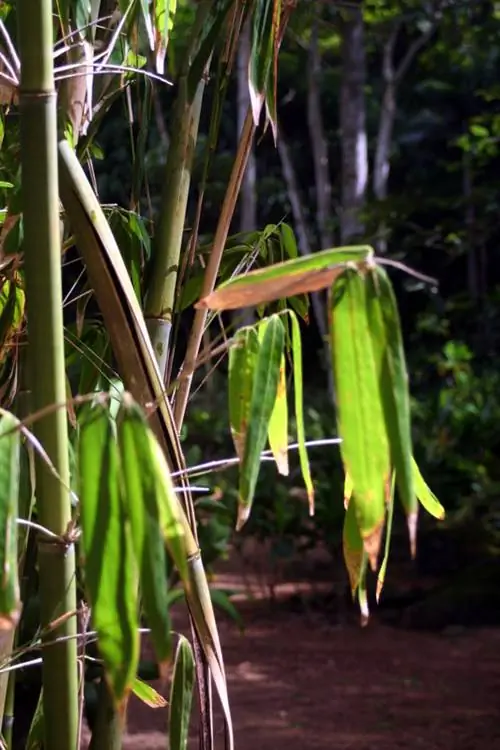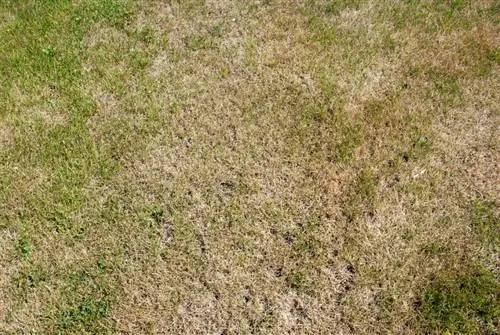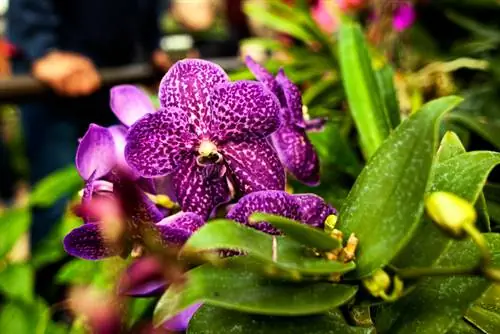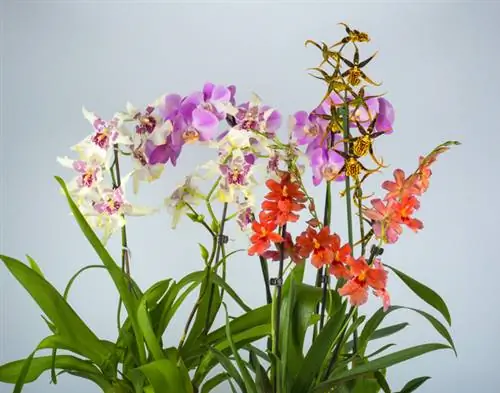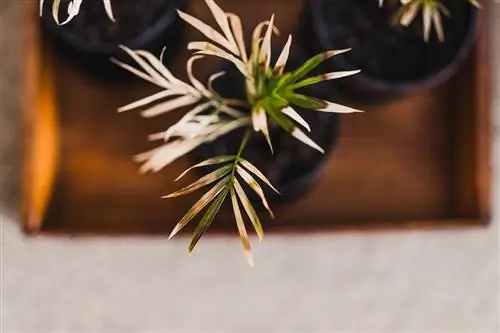- Author admin [email protected].
- Public 2023-12-16 16:46.
- Last modified 2025-01-23 11:20.
Some of the most beautiful orchid species terrify us when their flowers, leaves and stems dry up. On a lovingly cared for plant, this is no cause for concern. Read here how to properly care for a dry orchid to encourage it to bloom again.
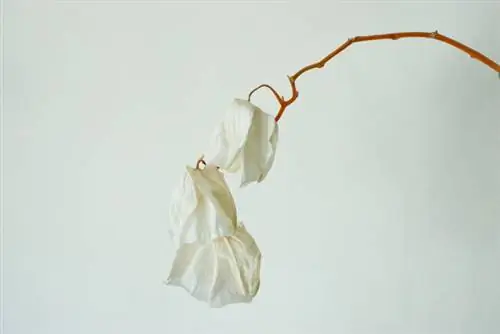
How to care for a dry orchid?
If your orchid is dry, cut off dried leaves and stems first. Water sparingly and do not fertilize during dormancy. Repot when growth begins, increase the amount of water and fertilize after 6-8 weeks. Dry conditions are better than waterlogging.
Dry orchids are resting - their care program is not
Not all types of orchids bloom constantly. Hybrids with bulbs in particular retreat for some time to gather fresh strength for the next flowering period. As a visible sign, the flowers, leaves and stems dry up. With this care you will guide the plants through the rest period:
- Only cut off the leaves and stems when they are completely dry
- Pluck withered flowers or let them fall to the ground
- Watering sparingly
- Do not fertilize
The majority of orchids go dormant during the cold season. The reduced lighting conditions are the biggest problem in care in winter. Give the plants the brightest possible location on the sunny windowsill. If in doubt, plant lamps (€89.00 at Amazon) compensate for the lack of light. If the air in the room is dry, spray the dormant orchid with soft water at least once a week.
Repotting brings dry orchids to life
When the sun gains strength again at the end of February/beginning of March, the rest phase for orchids is coming to an end. Changing to fresh substrate now provides new momentum. Dip the root ball in soft water to soften the aerial roots. Then pot up the plant and cut off all dried, dead aerial roots.
With a slight twisting movement, position the root network in the culture pot and fill in the new substrate little by little. Water a little and assign the orchid to its original location. The amount of irrigation water is increased in proportion to the progress of growth. After 6-8 weeks the first fertilizer can be applied to mark the final end of the dry, lean dormancy period.
Tip
If you forget to water your orchid regularly, that is no reason to throw away the dry plant. In contrast to waterlogging, the flowering beauty from the rainforest can tolerate dry conditions for some time. As soon as you notice the omission, immerse the root ball in soft, room temperature water until no more air bubbles appear.


